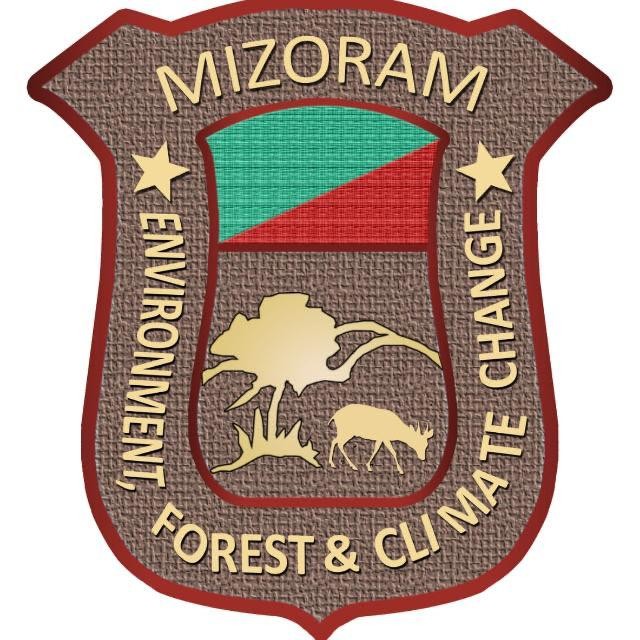Bamboo Resources in Mizoram
Mizoram has abundant natural Bamboo resources. Around 57% of the geographical area of Mizoram is under Bamboo cover found at heights ranging from 400m – 1500m above mean sea level. Bamboo forests are found mainly along the river banks and abandoned jhumland as a dominant secondary vegetation. Both the clump forming and non-clump forming bamboos are available in most part of Mizoram except in the higher altitudes of the eastern parts of Mizoram. There are twenty species of Bamboos in Mizoram of which Melocanna baccifera is the dominant forest resource of the state.
The dominant species M. baccifera called ‘Mautak’ is a versatile species; it is a spreading species forming no clumps. The culms grow up to 8-10m, they are widely used for construction of Kacha houses, furniture, fencing, weaving and pulping. The shoots are eaten in large scale, during rainy season it forms a dominant food item.
Bamboo species found in the state are under:-
|
Sl.No |
Mizo Name |
Scientific Name |
|
1 |
Ankuang |
? |
|
2 |
Chal |
Schizostachyum polymorphum (Munro) Majumdar |
|
3 |
Lik |
Sinarundinaria falcata (Nees) |
|
4 |
Lik |
Sinarundinaria griffithiana (Munro) |
|
5 |
Lik |
Sinarundinaria longispiculata (Bor) |
|
6 |
Mautak |
Melocanna baccifera (Roxb) Kurz |
|
7 |
Phar |
Chimonobambusa callosa (Muno) Nakai |
|
8 |
Phulrua |
Dendrocalamus hamiltonii (Nees & Arn.) |
|
9 |
Phungki rua |
Thyrsostachys oleveri Gamble |
|
10 |
Ralleng mau |
Bambusa nagalandiana Naithani |
|
11 |
Rawchhia |
? |
|
12 |
Rawhling |
Bambusa bambos Voss in Vilmorin |
|
13 |
Rawlak/ Rawkhauh |
Dendrocalamus hookerii (Munro) |
|
14 |
Rawmi |
Dendrocalamus sikkimensis (Gamble) |
|
15 |
Rawnal |
Dendrocalamus longispathus (Kurz) |
|
16 |
Rawngal |
Schizostachyum capitatum Jajumdar |
|
17 |
Rawngal |
Schizostachyum fuchsianum (Gamble) |
|
18 |
Rawpui |
Dendrocalamus giganteus (Munro) |
|
19 |
Rawte |
Schizostachyum manii (Gamble) Majumdar |
|
20 |
Rawthing |
Bambusa nutans Wall |
|
21 |
Rawthing |
Bambusa tulda Roxb |
|
22 |
Rawthla |
Schizostachyum dulloa (Gamble) |
|
23 |
Saiman |
Neomicrocalamus manii (Gamble) Naithani |
|
24 |
Sairil |
Melocalamus compactiflora (Kurz) |
|
25 |
Talan |
Bambusa mizoramiana Naithani |
|
26 |
Tursing |
Dendrocalamus strictus (Roxb) Nees |
|
27 |
Vairua |
Bambusa vulgaris (Schrad.ex Wendl.) |
Bamboo Flowering
Bamboos are easy to grow with few specific environmental requirements other than a plentiful supply of water. However, they do have some characteristics that render them less attractive to prospective growers, harvesters and users. Some bamboo species are known to have a life cycle of a fixed length after which they flower and die and a new generation emerges from the seedlings. In Mizoram Melocanna baccifera and Bambusa tulda both have lifecycles of 48 years. The two species do not flower together at the same time. B.tulda flowers 18 years with a few plants flowering in the first and third years and the vast majority flowering in the second yeas. Flowering starts from the south of the state and proceeds northwards.
The fruits of bamboo are edible and the sudden enormous increase in their availability cause a rapid explosion of the rat populations, whose numbers are related to the availability of food. The rats not only devastate the naturally regenerating seeds and seedlings and thereby reduce the generation rate, but also destroy other crops and stored grains. Serious famines result. The famines caused by the flowering of Melocanna baccifera are known as the ‘Mautam’ famine. These occurred in Mizoram in 1815, 1863, 1911, 1959 and 2007. The flowering of Bambusa tulda causes “Thingtam”. Famines, which are more severe because the fruits of M.baccifera are much larger and can support larger populations of rats.
Checklist of bamboos of Mizoram click here


















